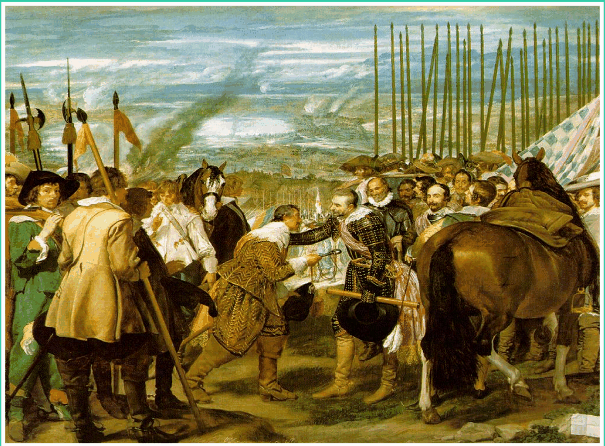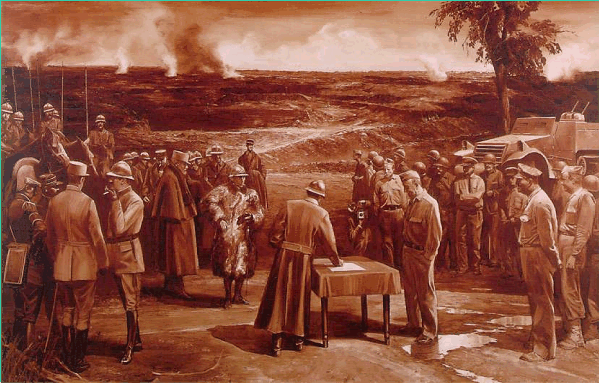Mark Tansey is one of the postmodern artists who is inspired by Valezquez. Unlike post-painters like Mike Kelley, his medium is startlingly old-fashioned, which is certainly not discouraged by post-modernism, which in some ways encompasses art history. Art history is Tansey's subject, as well, but not in any direct way. He isn't painting pictures of Picasso meeting Braque for the first time, for example.
The painting here specifically references the Surrender at Breda. The Triumph of the New York School depicts the shift of the art world from Paris to New York as if a war had been won. The French are World War I soldiers and the Americans World War II soldiers. There are many things that could be remarked on in this excellent painting--the anachronistic lances, the importance of critics in the American camp--but what strikes me most is the way that war, and world events, shaped art history. France was weakened by World War I, and devastated by World War II. America grew economically and avoided being invaded by Germans, giving its artists a space in which to flourish. Indeed, many of the School of Paris fled to New York during the second World War.
For Tansey, then, art history is a mirror of actual history. Histories of art often leave this out, especially formalists histories. Tansey uses the classic form of the history painting to remind us that art history is a part of the history of humanity, not a thing apart.



